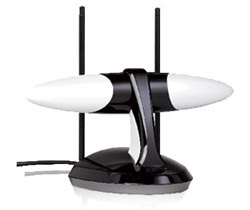 HD aficionados will tell you that they have switched back and forth from cable or satellite HD broadcasts to over-the-air broadcasts to compare quality. Most of those I’ve asked have said that in most cases, as long as there is no interference, the quality of the over-the-air signal is better than the service provider. What’s more, the audio is uncompressed. You audiophiles out there can attest to the superior quality of digital over-the-air audio.
HD aficionados will tell you that they have switched back and forth from cable or satellite HD broadcasts to over-the-air broadcasts to compare quality. Most of those I’ve asked have said that in most cases, as long as there is no interference, the quality of the over-the-air signal is better than the service provider. What’s more, the audio is uncompressed. You audiophiles out there can attest to the superior quality of digital over-the-air audio.
Because there is no compression on audio, and little compression sending the video (or what you could call the “image”), the over-air-broadcast is usually superior. This is because the signal is not traveling through miles of wires or being beamed back and forth to satellites. Although you may be 40 miles away from a broadcast facility, over-the-air is just a cleaner way to deliver a broadcast.
Here’s how you can test for yourself. Turn on a Sunday afternoon football game being broadcast over-the-air on one of the major networks. Crank up the volume or use headphones so you can clearly hear the audio. (Hint: If you live near a highway or a playground, you had better put on the headphones.) Listen to a few seconds of the uncompressed over-the-audio, and then switch to the satellite channel and compare. Usually there is a two or three second delay on the audio from the service provider, so you can compare what you have already heard to the compressed version.
I think most of you will be shocked. The over-the-air signal offers audio so crisp and sharp it sounds like you are really in the stadium. The cable or satellite audio will be lower in volume, (unless you have an equalizer set up) so make sure you make a fair comparison by matching the volume from each signal.
For more information on over-the-air signals, refer to my previous article on how you can get free HD broadcasts.












